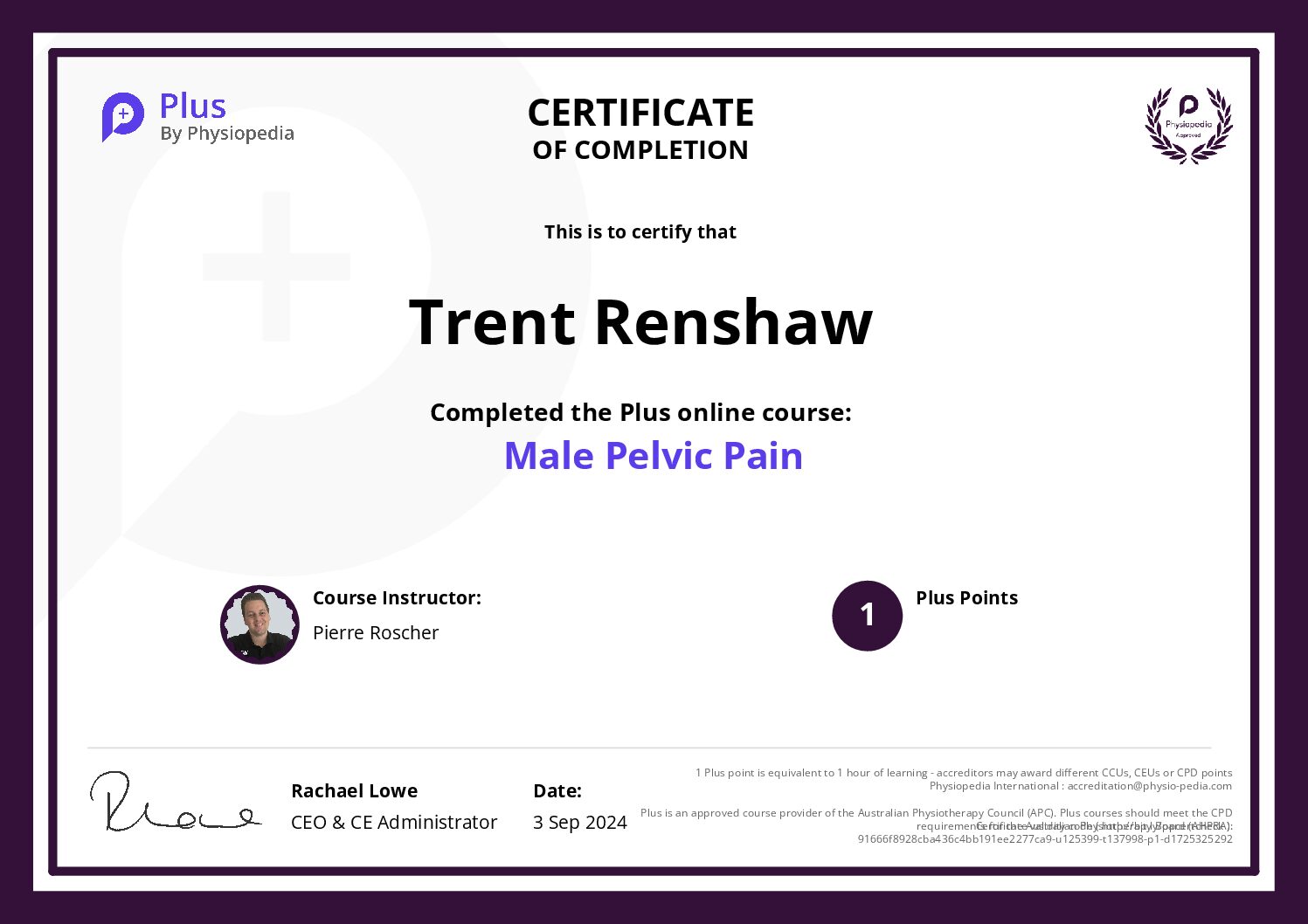Foundations in Oncology Massage
AusTriathlon Foundation Coach 2024-2025
Mens Health Physiotherapy Pelvic Treatment
Mens Health Physiotherapy Pelvic Assessment
Overview of Prostate Cancer
Male Urinary Incontinence
Introduction to Mens Health Physiotherapy
Provide cardiopulmonary resuscitation
Complex Physical Therapy for the Assessment & Management of Lymphoedema
HLTAID009 – Provide cardiopulmonary resuscitation
Triathlon Australia Foundation Coach Accreditation 2022-2023
Community Coaching Essential Skills
Musculoskeletal Injury Prevention
Practical Assessment and Treatment of Cervicogenic Headaches
Introduction to Cervicogenic Headaches
The Theory and Practice of Massage and Exercise for Plantar Heel Pain
Plantar Heel Pain Syndrome Overview
Anatomy and Relevant Structures in Plantar Heel Pain
Introduction to Myofascial Pain
Myofascial Pain Evaluation and Treatment
Functional Anatomy of the Male Pelvic Floor
Introduction to Prostate Cancer
Introduction to Motor Neurone Disease for Front-Line Staff
Theragun Licensed Massage Therapist Course
Introduction to Sports Taping




























